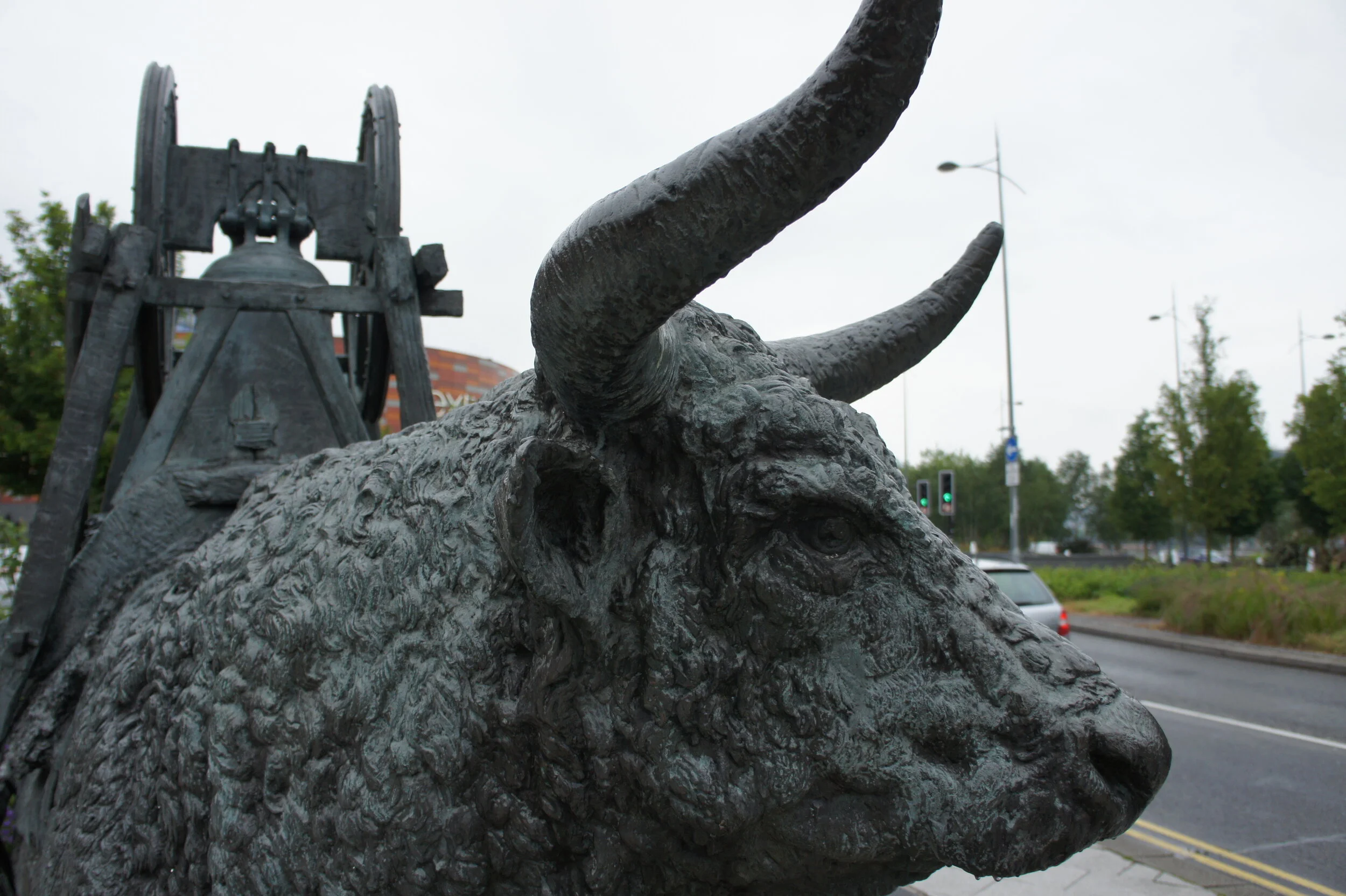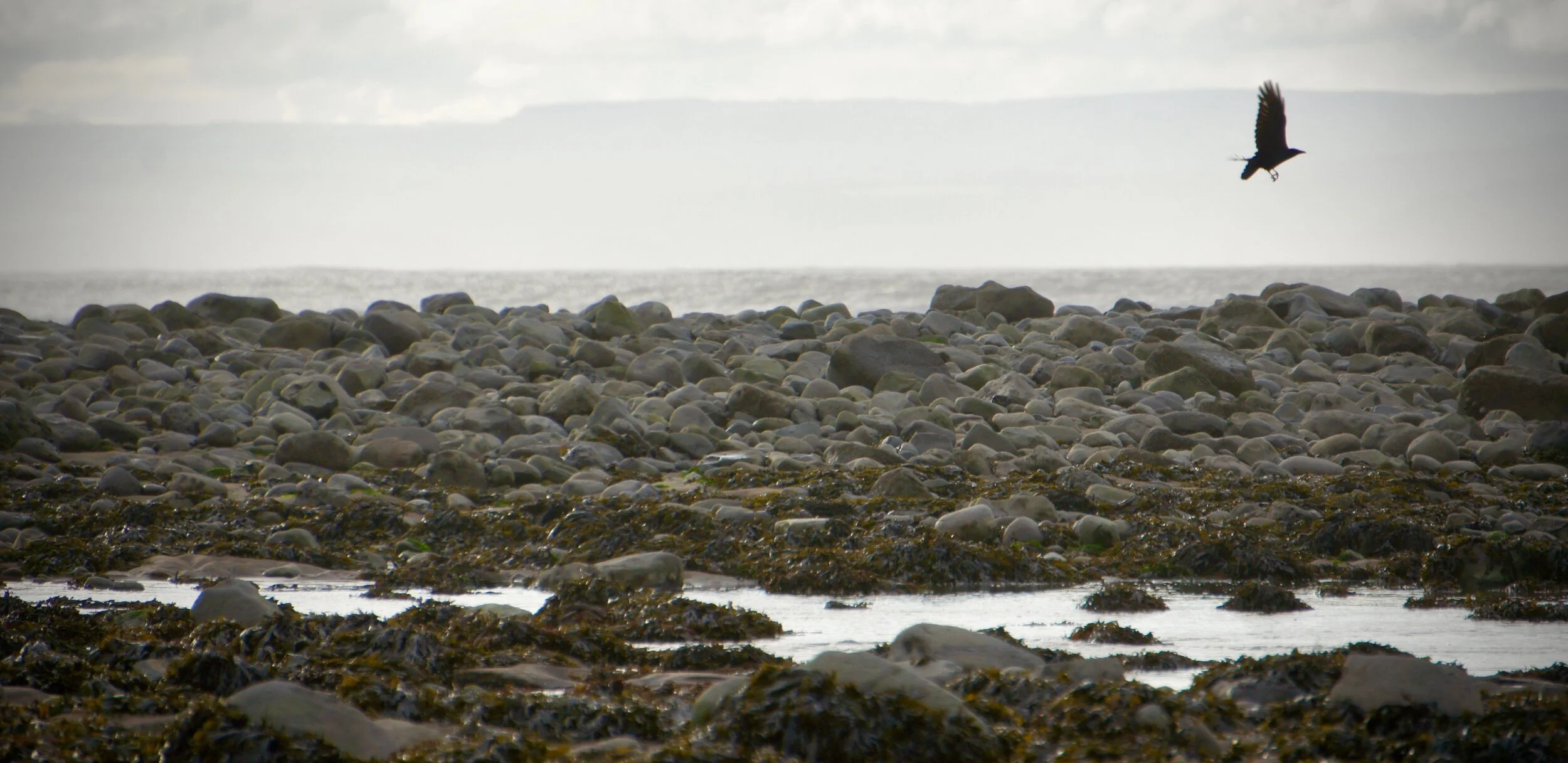To Market To Market To Buy a Fat Pig
This blog post carries on from one I posted recently and to make sense of this post you might want to have a quick look at the other one which you can find right here.
Gwynllyw’s Ox surveys his domain.
So, I was back in the centre of Newport nearly twenty years after being part of the unveiling ceremony of Gwynllyw’s Ox. I had been helping to prepare for a creative sharing by local primary schools based on the Mabinogion, organised by Operasonic. There was a lull around lunchtime before the actual performance and that’s when I decided to see if I could find Gwynllyw’s Ox. This was the statue of the white ox with the black star on its forehead that Gwynllyw had seen, first in a dream and then in real life. The ox that turned him from pirate into saint. If you find that transition unlikely then you need to have a look at the backstory.
Newport has changed a lot since I was there last. To begin with, it is now a city not a town, it has the shiny new Riverfront Theatre and a completely redeveloped city centre, which turned out to be both my undoing and a revelation.
Henwen, in all her glory.
I had a vague recollection of the unveiling being in the middle of a pedestrianised shopping street and was confident enough to just follow my nose and trust that I would find it. Before long I saw a bronze sculpture outside the covered market. Perhaps the ox had been moved? But when I got there it was not an ox but a large and friendly sow carrying all sorts of delicacies on her back. The name of the sculpture was ‘To market, to market…’ Suddenly the old nursery rhyme I had not heard since I was a child bounced into my inner ear from the recesses of my brain ‘To market, to market to buy a fat pig. Home again, home again, jiggety jig’. Charming, but not an ox.
I followed my nose for a while and, strangely for someone with a truly terrible sense of direction, I found the spot where I had been part of the ox unveiling ceremony without much bother. However, although I was in the place I has wanted to be and there was a sculpture there, it was the wrong one. My ox had wandered off and been replaced by something else.
I started to ask around and was helped by many passers-by, each with a unique perspective on where my ox was. As I followed their directions and talked to more people, a consensus began to emerge and I knew I was getting close. I arrived at the spot that a number of different people had told me to find and when I got there - no ox!
Time was running out. I had to get back to the theatre soon or the doors would be shut. I decided to try one more person. The patient gentleman in question listened politely and pointed round the corner, saying “You really can’t miss it.”
He was right. There he was. Gwynllyw’s Ox, proud and vigourous with a cathedral bell on his back. It was good to see him again, keeping an eye on the traffic passing the Newport Centre. And I made it back to the theatre in time to see some great Year 5 Children reanimate the stories of the Mabinogi through art, song and drama. These old stories with their weirdness and magic certainly struck a chord with these young, Welsh, future artists.
On the train on the way home I started to think about the pig again. She was glorious, fecund and gleeful. Then I realised who she really was. This was no illustration of a Victorian nursery rhyme but something much older. This was Henwen. The sow that came to Wales from Gwlad yr Haf/the summer country/Somerset. Her name means ‘Old White’ but ‘gwyn’ and ‘gwen’ (‘white’ in their masculine and feminine forms in Welsh) mean a lot more than just ‘white’.
Gwyn ap Nudd (White/Bright son of Nudd) is the king of Annwfn, the Welsh underworld; Y Widdon Orddu ferch y Widdon Orwen (the very black witch daughter of the very bright witch) is a scary character from the story Culhwch and Olwen; y gwynfyd ‘white/bright world’ is heaven and, if someone is particularly happy or lucky, you you tell them that they are ‘gwyn eich byd'/white your world’. Dark and light seem to come as a package in this cosmology, reminding me of lines from Cân yr Enaid/the Song of the Soul from the Black Book of Carmarthen
I was gleaming fire when I came into the world
I was dust of the earth, blown by the wind beyond the reach of grief
Good and evil mixed together
Henwen came to our shores and gave birth to all sorts of good things as she ran along our valleys. Actually, more than likely, she actually made the valleys as she went, a bit like the Irish cailleach, who is also impossibly old, a landscape maker and bringer of plenty and darkness. Henwen brought wheat, apples, bees and, to balance out the plenty, she also brought us the monster, the Cath Palug .
Her body is rolled with fat, her piggy eyes sparkle with glee, she hands out largesse which can both be a blessing or a curse depending on how and where it is received and she mixes the light and dark with a snort and a grunt. I am so glad I bumped into her looking for my ox!
A view over the Severn Estuary towards Somerset from the Vale of Glamorgan. Henwen came this way.




